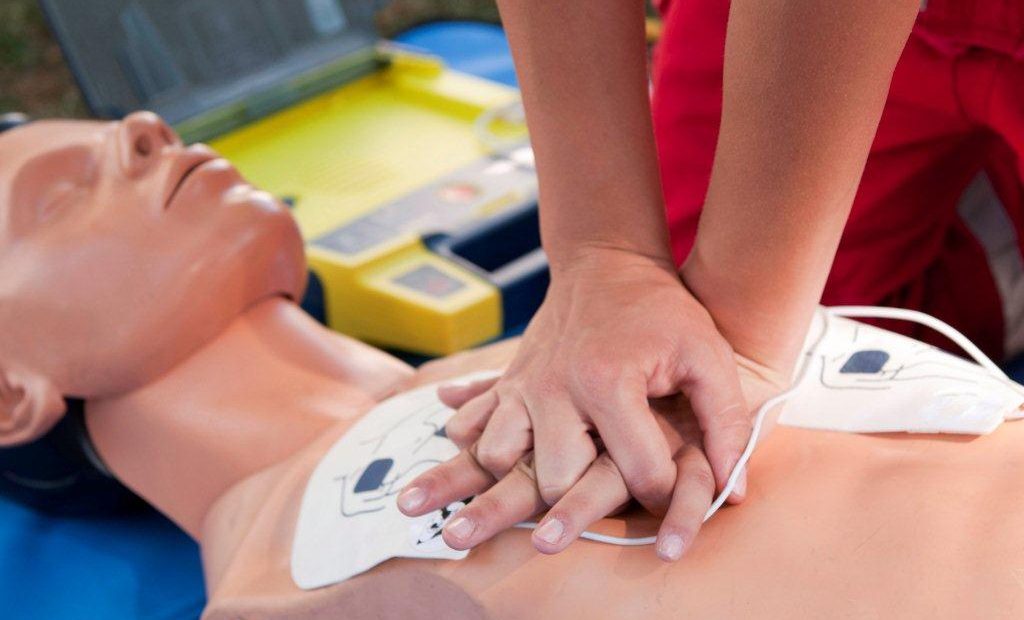First aid
Definition of medic
Qualities and qualifications
Duties
Priorities for the ambulance Wasa Pat kit
The status of the patient’s safety profile
Priority to provide first aid to several injured
How to deal with the injured person conscious
How to deal with a person unconscious conscious
At the end of this lecture, the student will be able to:
• Definition of first aid
• targets first aid
• causes of injuries
First aid and objectives
Vital Signs
the heat
Types of thermometers
Places to measure body temperature
Contraindications temperature measurement from the mouth
Straight
Armpit
Ear
Pulse
tariff
How to measure the pulse
Cases pulse
Breathing
Factors affecting breathing
blood pressure
tariff
Tools for measuring pressure
Measurement methods
Factors affecting the arterial blood pressure
Hypertension
Wounds
Definition of
Types of wounds
Methods of treating wounds
Signs and symptoms Jerouhl
Dog bite
Asaaffha
Prevention of rabies
Burns
Defined
Causes
Degrees of burns
Causes burns of the three degrees of the first, second and third
Chemical burns
Sunburn
Bleeding
Causes bleeding
Types of bleeding
According to the bleeding vessel
By position
Symptoms and signs
Nosebleed
Reasons Alraaffh
Treat nosebleed
Bleeding tongue
Bleeding teeth
Ambulatory treatment
Shock
Defined
Classifications
Treatable
The role of medic
Fainting and hibernate
And faint signs
Ambulances and treatment
Hibernate
Ambulatory treatment
Epilepsy
Symptoms and signs
Ambulance and treated
Convulsions
the reasons
Ambulances
Fractures
Types of fractures
Places fractures
Fractions signs
Ambulances
Ambulance open fractures
Signs of pelvic fracture:
Ambulances
Head injuries and spine
Symptoms
Fractures
Signs of cutting the spinal cord
Ambulance injured spine
How to install the head and neck
First aid to the injured
Splints
Types of splints
Environmental risks
Heatstroke
First aid and treatment
Heat stroke
Poisoning
Kinds of toxins
Bitten by snakes
Suffocation and drowning
Choking and its causes
Signs and symptoms
Ambulatory procedures
Ambulance choking for adults
Ambulance child and infant patient suffocated
Drowning
Cause of death in drowning
Ways to prevent it from sinking
How ambulance drowned
CPR
Cardiac arrest
Ventilator
Action ventilator ways
Recovery measures
Home pharmacy
Objectives
Pharmacy anywhere in the home
Contents
Medicines for patients
Heat and Cold Stress Safety
If you are a safety manager, supervisor, committee member, or someone who is entering into the occupational safety and health field, this course will help you understand your important responsibilities.
Introduction
At times, workers may be required to work in hot or cold environments for long periods of time. When the human body cannot maintain a normal temperature, temperature-related illnesses can occur and even result in death. When exposed to cold temperatures, your body begins to lose heat faster than it can be produced. Prolonged exposure to cold will eventually use up your body’s stored energy.

According to the Center for Disease Control, more people die from extreme heat exposure than from hurricanes, lightning, tornadoes, floods, and earthquakes combined in the United States. During 1979 to 1999, more than eight thousand heat-related deaths occurred in the US.
This course offers information to employers and employees on measures they should take to prevent illness and death caused by extreme temperatures.
Modules
- Heat Stress and Safety
- Cold Stress and Safety


